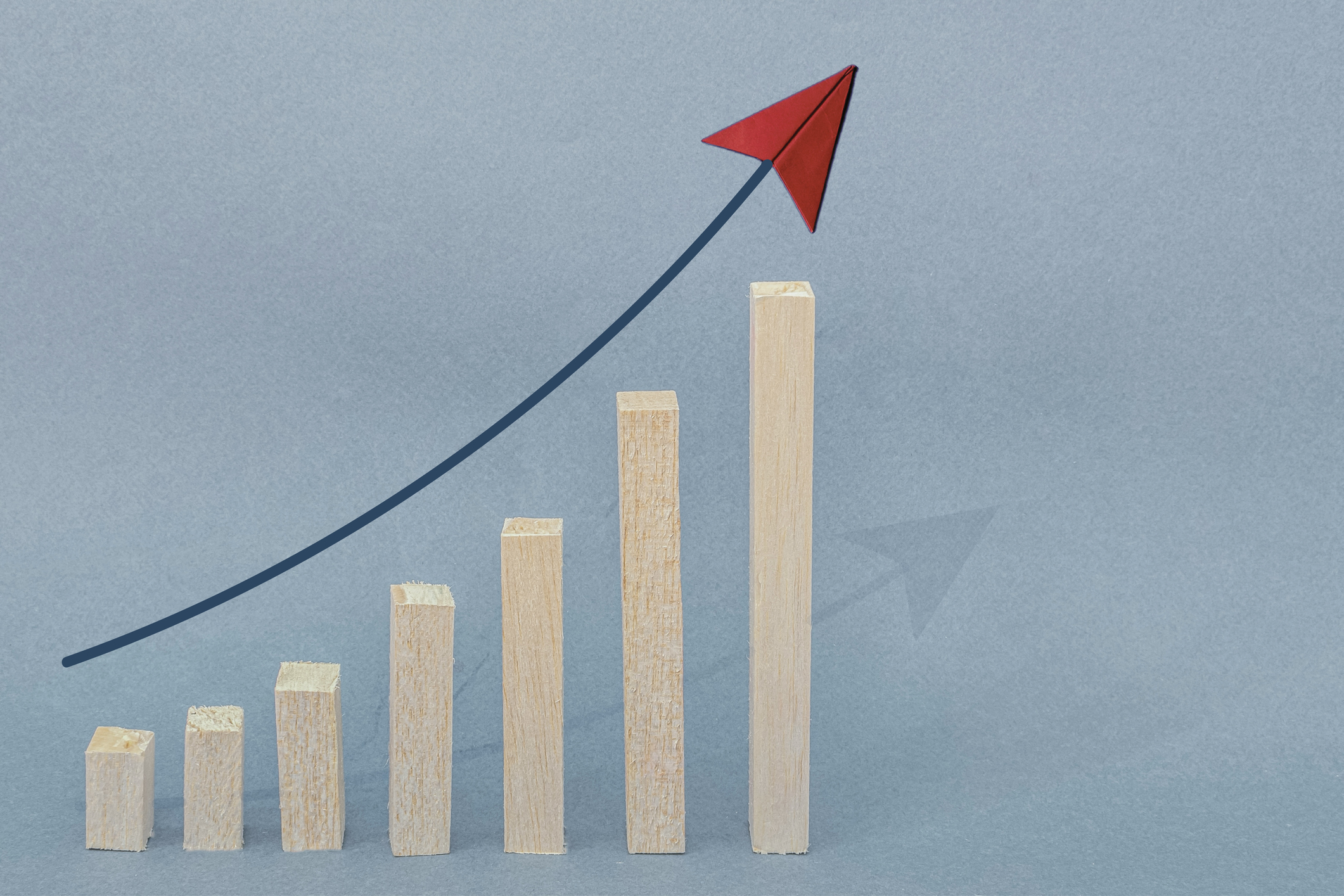Protect Your Retirement Income from Inflation
With a new President promising tariffs on imported goods from China, Mexico and Canada, inflation may rise in 2025, but that doesn’t have to jeopardize your long-term security.


Donna Fuscaldo
Inflation is finally flattening out after setting post-pandemic records. But this lower inflationary environment may not last if incoming President Donald Trump follows through with his promise to impose tariffs on goods imported from Canada, China and Mexico.
Some economists predict tariffs could cause inflation to rise again, impacting the wallets and returns of many retirees. The prospects of tariffs are already having an impact. The Federal Reserve cited economic uncertainty under a new President for its more cautious stance on cutting interest rates in 2025.
If you’re a retiree (or near retiree) who is worried about inflation heading into 2025 you are not alone. Even for super savers, inflation is retirement kryptonite. To keep up with rising costs, you may be forced to take larger withdrawals from your portfolio, increasing the risk that you’ll outlive your nest egg. And if inflation is accompanied by a bear market, those withdrawals can leave a permanent hole in your portfolio.
From just $107.88 $24.99 for Kiplinger Personal Finance
Be a smarter, better informed investor.

Sign up for Kiplinger’s Free Newsletters
Profit and prosper with the best of expert advice on investing, taxes, retirement, personal finance and more - straight to your e-mail.
Profit and prosper with the best of expert advice - straight to your e-mail.
Although you can’t control the inflation rate—or the stock market—you can take steps to protect your retirement security. Here's how.
The 4% rule for retirement withdrawals
One of the most perplexing questions facing retirees is this: How much can I withdraw from my savings each year without running out of money? For many, the answer has been to use the 4% rule, developed by William Bengen, an MIT graduate in aeronautics and astronautics who later became a certified financial planner.
Here’s how it works: In the first year of retirement, withdraw 4% from your IRAs, 401(k)s and other tax-deferred accounts (which is where most workers hold their retirement savings). For every year after that, increase the dollar amount of your annual withdrawal by the previous year’s inflation rate. For example, if you have a $1 million nest egg, you would withdraw $40,000 the first year of retirement. If inflation that year is 2%, in the second year of retirement you would boost your withdrawal to $40,800.
Although the 4% rule has held up well since it was introduced in 1994, Bengen acknowledges that a period of high inflation could threaten his formula. The past few years illustrates why: Using the above example, if you retired this year and withdrew $40,000 from your $1 million nest egg, you would increase your withdrawal to about $43,200 (assuming inflation increased 8% again). That’s a significant amount under any circumstance, but such a sizable withdrawal during a bear market exposes you to what’s known as sequence-of-returns risk. If your account balance shrinks significantly during the early years of your retirement, you have fewer assets to create returns during market recoveries, posing the threat that you’ll run out of money in a retirement that could last decades.
Investment firm Morningstar recommends in higher inflationary periods a 3.3% withdrawal rate for new retirees who have a portfolio mix of 50% stocks and 50% fixed-income investments and a 30-year time horizon.
Financial planners say retirees should view the 4% rule as a guideline, not something that’s engraved in stone. Cecil Staton, a certified financial planner in Athens, Ga., sets up guardrails for his clients that reflect their individual circumstances, with withdrawal rates ranging from 3% to as high as 6%. “Somebody in their early sixties is probably going to have a different guardrail than somebody in their seventies,” he says. “The longer money needs to last, the more conservative you should be with withdrawal rates.”
Reducing your withdrawals when prices are rising can be a challenge. But in the early years of retirement, trimming your withdrawals by even a small amount—say, from 4% to 3.8%—will reduce the risk that you’ll run out of money, says Wade Pfau, professor of retirement income at the American College of Financial Services. Over a 30-year period, he says, “even small changes can have a big impact.”
Monitor investment fees
High investment costs can put an additional drag on your portfolio at a time when you can least afford it. A recent report from Pew Charitable Trust found that workers who roll their 401(k) plans into an IRA often end up paying higher fees for mutual funds than they paid when their money was in a 401(k). Workplace retirement plans can use their purchasing power to offer institutional-class shares, which are usually less expensive than the retail-class shares sold by IRA providers.
Leaving your savings in your employer plan is one option, but there are drawbacks to this strategy. You may want to consolidate accounts left with several former employers into one IRA, and your former employer may limit the number of withdrawals you can take from the plan. If you decide to move your money, you can shop around for low-cost funds before rolling over your 401(k), or roll over funds that are already in an IRA into an account with a lower-cost provider. The Financial Industry Regulatory Authority (Finra) provides an online analyzer you can use to compare the costs of more than 30,000 mutual funds, exchange-traded funds and money market funds.
Using the bucket system? Take it easy on cash
Many retirees use a strategy known as the bucket system to protect themselves from market downturns. With this system, you divide your savings among three buckets. The first is designed to cover living expenses for the next one to three years, after you tap a pension or annuity (if you have one) and Social Security. Because you need to be able to access the funds at any time, money in this bucket is typically stashed in an ultra-safe investment, usually a bank savings account or money market fund.
The second bucket contains money you’ll need over the next 10 years and can be invested in short- and intermediate-term bond funds. The third bucket is filled with money you won’t need until much later, so you can invest it in assets that are riskier but offer potential for long-term growth — mainly stocks, and possibly real estate and commodities.
The amount you should keep in your cash bucket depends on your individual circumstances — other sources of income, for example, and your tolerance for risk. During unsettling times like these, it may be tempting to increase the amount of money stashed in this bucket, where it won’t be buffeted by market turmoil or global conflicts. But keeping too much of your savings in cash will amplify the risk that you’ll run out of money, says Jamie Hopkins, director of private wealth management at Bryn Mawr Trust, a wealth management firm.
“If you’ve got $10 million in savings, you can move it all into certificates of deposit and live like a king, but most people don’t have the luxury to move everything into a really conservative asset,” says Matthew Benson, a CFP in Chandler, Ariz. “The risk that everyone thinks of when they think of investing is volatility, but for a retiree, one of the bigger risks is their assets being eroded by inflation.”
A reverse mortgage can generate cash
Home values are still high, even with mortgage rates up, leaving senior homeowners with $14 trillion in home equity. If you’re planning to downsize, you can tap that equity right away and add the proceeds to your savings. But if you want to stay in your home, there’s another option: Take out a reverse mortgage line of credit as early as possible—homeowners are eligible at age 62.
The line of credit will create a buffer during market downturns, providing a source of funds to pay expenses until your portfolio recovers, says Pfau. You won’t have to pay the money back as long as you remain in your home. In 2025 the maximum amount you can borrow using the government insured Home Equity Conversion Mortgage, the most popular kind of reverse mortgage, is $1,209,750 up from $1,149,825 in 2024.
While some TV ads may lead you to believe that every senior needs a reverse mortgage, there are definite downsides. Up-front costs are high, so you shouldn’t take out a reverse mortgage unless you plan to stay in your home for at least five years. The loan will come due when the last surviving borrower sells, leaves for more than 12 months due to illness or dies. If your heirs want to keep the home after you die, they’ll need to pay off the loan.
A HECM reverse mortgage is a “nonrecourse” loan, which means the amount you or your heirs owe when the home is sold will never exceed the value of the home. As long as you remain in the home, you retain ownership, but you’re responsible for paying taxes and insurance and maintaining the property.
Max out social security benefits
If you’re anywhere near retirement, you probably know that you’re eligible to file for Social Security benefits at age 62. And you’re probably also aware that you can increase the size of your benefits by waiting until at least full retirement age (FRA) — 66 for beneficiaries born between 1943 and 1954, gradually increasing to 67 for beneficiaries born in 1960. If you wait until age 70, you’ll maximize your benefits. If you’re able to continue postponing benefits after you reach full retirement age, you’ll receive an 8% retirement credit for every year between FRA and age 70.
Not everyone can afford to postpone filing for Social Security benefits, but if you’re married, you may be able to have it both ways. The lower-earning spouse could file before full retirement age, even though that will mean a reduction in that spouse’s benefit (up to 30% if the spouse files at age 62). Use that income, along with income from other sources, to pay expenses while the higher earner’s benefit — which will get the biggest boost from delayed-retirement credits — continues to grow until age 70. This strategy also increases survivor benefits. A surviving spouse who is at least full retirement age can receive 100% of the deceased spouse’s benefit.
Consider taking a lump sum instead of a traditional pension
If your employer provides a traditional pension, you may be offered two options at retirement: monthly payments for life or a lump sum. In uncertain times, it’s tempting to choose the monthly check, because who doesn’t want guaranteed income for life? But the decision isn’t as straightforward as it seems.
First, most traditional pensions aren’t adjusted for inflation, so the buying power of your monthly checks will erode over time. A lump sum, however, can be invested, providing the potential for growth that will keep pace with rising costs. A market downturn, if it occurs, offers the opportunity to buy stocks and stock funds at lower prices than you would have paid, Staton says.
Another factor to take into account: interest rates. Lump-sum payouts are calculated based on the present value of guaranteed monthly payments, using mortality tables and interest rates published by the IRS and updated monthly. Basically, the lower the published rates, the higher the lump-sum payout, Benson says. Interest rates are coming down but not fast as many would like.
A final factor to take into consideration is the financial health of your employer. Are you confident that your company will be around for the next 30 years (or more)? Your employer is required by law to honor your pension contract, and the federal Pension Guaranty Benefit Corp. provides a backstop if your company is no longer able to fulfill that obligation. But if your employer files for bankruptcy and the PBGC takes over the plan, you may not receive 100% of the pension you were originally promised. In 2025, the maximum pension guaranteed by the PBGC for a 65-year-old retiree is $89,181 (or $80,263.68 for a joint annuity that will pay 50% of benefits to the surviving spouse).
There are still, of course, strong arguments in favor of taking guaranteed monthly payments, particularly if you’re confident your employer will be around to pay them. If you expect to live a long time, you won’t have to worry about running out of money in your later years. If you opt for the joint-and-survivor option, the surviving spouse will also receive lifetime income (although your payments will be lower). And if guaranteed income is important to you, you’ll likely receive a bigger monthly payment from your employer than you could purchase by investing in an immediate annuity.
Your tolerance for risk matters, too. Many retirees will sleep better at night if they know they’ll receive a monthly paycheck, even if it’s not adjusted for inflation. And as is the case with immediate annuities, which we discuss below, having a source of guaranteed income to cover your regular expenses could allow you to take more risks with funds you’ve saved in IRAs or other non-pension sources.
Consider annuities for a portion of your nest egg
By allowing you to convert a chunk of your savings into a guaranteed monthly check, immediate annuities are a DIY pension for retirees who may not receive one from their employer. But annuities also suffer from the same disadvantages as traditional pension payouts in an inflationary cycle. Unless you buy an inflation rider, which could reduce your initial payouts by up to 28%, your payments won’t keep pace with the rising cost of living.
Advocates of annuitizing a portion of your nest egg say that doesn’t mean you should dismiss this financial option. If you invest enough in a single-premium immediate annuity to cover most of your non-discretionary expenses, you can reduce withdrawals from the rest of your portfolio during market downturns, thus lowering sequence-of-returns risk, Pfau says. Plus, with your expenses covered, you can invest the rest of your portfolio more aggressively — which means those funds stand a better chance of staying ahead of inflation, he says.
Rising interest rates make immediate annuities more attractive. Payouts are typically tied to rates for 10-year Treasuries, which are currently around 4.6%.
If you need income now, consider an annuity ladder. With this strategy, you spread out the amount you want to invest over several years. For example, if you want to invest $200,000, you would buy an annuity for $50,000 this year and invest another $50,000 every two years until you have spent the entire amount. As you age, the size of your payouts will increase in any event.
Indexed annuities offer the potential to earn higher returns than you’ll get from most fixed-income investments and can be converted to a guaranteed stream of income later in retirement. Buffered annuities, also known as registered index-linked annuities, or RILAs, are tied to a stock market index, but they have a floor, or buffer, that limits how much you can lose. For example, if the annuity has a buffer of 10% and the index it’s linked to falls 4%, you’ll lose nothing. If the index falls 30%, though, you’ll lose 20%.
Another option is to invest in a deferred-income annuity, which provides guaranteed payments when you reach a certain age. For example, a 65-year-old man who invests $100,000 in a deferred annuity that starts payments when he turns 80 would receive about $2,322 a month, according to ImmediateAnnuities.com, compared with $612 a month if he were to start payments immediately. The downside is that you could die before payments begin, leaving you and your heirs with nothing to show for your investment. For that reason, it’s helpful to think of a deferred income annuity as an insurance policy: You may not recoup your investment, but even if you live to 101, you won’t run out of money.
Reduce discretionary expenses
When it comes to things you can control to protect your savings from inflation, reducing spending is at the top of the list. “That doesn’t mean you have to change your lifestyle — just be a little more strategic,” Hopkins says. You may want to postpone your trip to Paris for a few months. Likewise, you may want to delay the purchase of a big-ticket item.
Paying attention to discretionary expenses is particularly important during the early years of retirement, when studies show that many retirees spend more than they do in their seventies and eighties. While that’s understandable — you’re still in good health and ready to have some fun — that’s also the period the sequence-of-returns risk is greatest. If you’re willing to be flexible about withdrawals during the early years of retirement, Hopkins says, you can always boost them later.
Lower your taxes with Roth options
Financial professionals often say that it’s not how much you make (or save), it’s how much you keep. While reducing the amount of money you must hand over to the IRS is always important, it’s even more critical when inflation and a market downturn are shrinking the size of your portfolio.
If you’ve saved diligently over the years, there’s a good chance you’ve stashed a lot of money in tax-deferred accounts — primarily IRAs and 401(k) plans. Whether you need the money or not, on April 1 of the year after you turn 73, you generally must start taking required minimum distributions from those accounts. (Starting in 2033 RMDs begin at age 75). You’ll pay taxes on those withdrawals, and if they’re sufficiently large, the income could push you into a higher tax bracket.
That isn’t the case with Roth IRAs: Withdrawals are tax-free as long as you’re 59-1/2 or older and have owned the account for at least five years, and you’re not required to take RMDs.
When you convert a traditional IRA to a Roth, you must pay taxes on all deductible contributions at your ordinary income tax rate. The tax bill is based on the value of your IRA at the time you convert. Suppose, for example, that your IRA was valued at $300,000 in January and is now worth $250,000. If you convert before your portfolio rebounds, you’ll pay taxes on the lower amount.
You don’t have to convert your entire IRA (or IRAs) at once, and if your account is large, you probably shouldn’t. You’ll have to pay taxes on the conversion for the year you convert, which could push you into a higher tax bracket and trigger other unpleasant consequences, such as the high-income surcharge on Medicare Part B premiums. Consider converting a specific amount every year, ideally just enough to remain within your tax bracket. Make sure you have enough money in your cash bucket to pay the tax bill next year.
Depending on how much you’ve saved in IRAs, 401(k)s and other tax-deferred accounts, you may not be able to afford to convert the entire amount to a Roth. A tax-smart strategy to deal with the remaining funds in tax-deferred accounts is to take calculated annual withdrawals before RMDs kick in, even if you don’t need the money, says Rob Williams, managing director of financial planning, retirement income and wealth management at Charles Schwab. Otherwise, you could find yourself forced to take a very large, taxable withdrawal at age 72. “You can often smooth out your taxes by taking some money out of IRAs and 401(k)s before you’re required to take RMDs,” he says. As is the case with Roth conversions, ideally you’ll want to keep those withdrawals small enough that you’re not bumped into a higher tax bracket.
Related content
Profit and prosper with the best of Kiplinger's advice on investing, taxes, retirement, personal finance and much more. Delivered daily. Enter your email in the box and click Sign Me Up.

Block joined Kiplinger in June 2012 from USA Today, where she was a reporter and personal finance columnist for more than 15 years. Prior to that, she worked for the Akron Beacon-Journal and Dow Jones Newswires. In 1993, she was a Knight-Bagehot fellow in economics and business journalism at the Columbia University Graduate School of Journalism. She has a BA in communications from Bethany College in Bethany, W.Va.
- Donna FuscaldoRetirement Writer, Kiplinger.com
-
 Tariffs, Inflation, Uncertainty, Oh My: How to Feel Less Stressed About Finances Now, Really
Tariffs, Inflation, Uncertainty, Oh My: How to Feel Less Stressed About Finances Now, ReallyTariffs, high prices and an uncertain economy getting you down? These steps can help.
-
 IRS Updates Capital Gains Tax Thresholds for 2026: Here’s What’s New
IRS Updates Capital Gains Tax Thresholds for 2026: Here’s What’s NewCapital Gains The IRS has increased the capital gains tax income thresholds for 2026. You'll need this information to help minimize your tax burden.
-
 Amazon Resale: Where Amazon Prime Returns Become Your Online Bargains
Amazon Resale: Where Amazon Prime Returns Become Your Online BargainsFeature Amazon Resale products may have some imperfections, but that often leads to wildly discounted prices.
-
 What Does Medicare Not Cover? Eight Things You Should Know
What Does Medicare Not Cover? Eight Things You Should KnowMedicare Part A and Part B leave gaps in your healthcare coverage. But Medicare Advantage has problems, too.
-
 15 Reasons You'll Regret an RV in Retirement
15 Reasons You'll Regret an RV in RetirementMaking Your Money Last Here's why you might regret an RV in retirement. RV-savvy retirees talk about the downsides of spending retirement in a motorhome, travel trailer, fifth wheel, or other recreational vehicle.
-
 Roth IRA Contribution Limits for 2025
Roth IRA Contribution Limits for 2025Roth IRAs Roth IRAs allow you to fund your retirement with after-tax dollars while you're working, and then withdraw those contributions and earnings tax-free when you retire. Here's a look at 2025 limits and income-based phaseouts.
-
 Four Tips for Renting Out Your Home on Airbnb
Four Tips for Renting Out Your Home on Airbnbreal estate Here's what you should know before listing your home on Airbnb.
-
 Five Ways to a Cheap Last-Minute Vacation
Five Ways to a Cheap Last-Minute VacationTravel It is possible to pull off a cheap last-minute vacation. Here are some tips to make it happen.
-
 How Much Life Insurance Do You Need?
How Much Life Insurance Do You Need?insurance When assessing how much life insurance you need, take a systematic approach instead of relying on rules of thumb.
-
 When Does Amazon Prime Day End in October? Everything We Know, Plus the Best Deals on Samsonite, Samsung and More
When Does Amazon Prime Day End in October? Everything We Know, Plus the Best Deals on Samsonite, Samsung and MoreAmazon Prime The Amazon Prime Big Deal Days sale ends soon. Here are the key details you need to know, plus some of our favorite deals members can shop before it's over.